Vilnius walking tour
In front of the Town Hall at noon, our mob of 60 tourists was split up into smaller clusters of 20 by three different guides. Our guide’s name was Martina, and she was energetic and knew everything there was to know about Vilnius and Lithuanian history.
Lithuania is the largest of the three Baltic states with a population of 2.9 million, which isn’t huge by any means, but any reason to get excited about your country, right? (Vilnius was also the first city in the Baltics to get an IKEA. ![]() ) Our first stop was on the other side of Town Hall, which is adorned with a plaque that immortalized the words of George W. Bush, who said that “anyone who would choose Lithuania as an enemy has also made an enemy of the United States of America.” Lithuanians felt so moved by this statement that they made this plaque almost immediately. But when Bush went to the Czech Republic, he said the exact same thing except swapped out the country name. I guess it’s too late to take down the plaque…
) Our first stop was on the other side of Town Hall, which is adorned with a plaque that immortalized the words of George W. Bush, who said that “anyone who would choose Lithuania as an enemy has also made an enemy of the United States of America.” Lithuanians felt so moved by this statement that they made this plaque almost immediately. But when Bush went to the Czech Republic, he said the exact same thing except swapped out the country name. I guess it’s too late to take down the plaque…
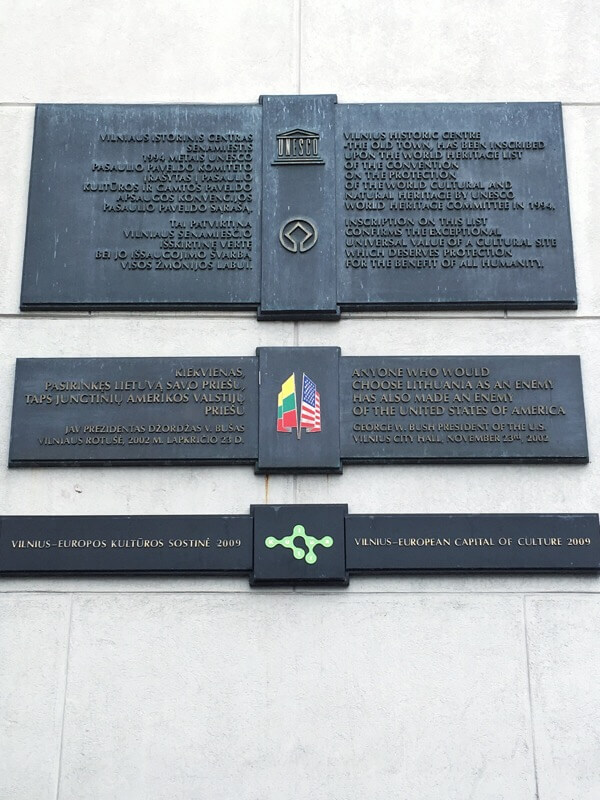
Back in the late 1300s when it used to be known as the Grand Duchy of Lithuania, it teamed up with Poland to stay strong against aggressive neighboring countries. This means that it has the most Polish influence in the Baltics, and the move brought Catholicism to the country. Before that, Lithuanian people worshipped pagan gods like the rest of the Baltics, but the difference is that they hung onto paganism the longest in all of Europe. In the 14th century, the Catholic church would ask Lithuanians to get baptized in exchange for a free woolen shirt. The church didn’t keep any records of who was baptized since it was desperate to baptize everyone en masse, so that meant one Lithuanian could return later to be baptized again for a second or third shirt, then return home to her pagan gods. We found a statue of Madaena, a pagan goddess, riding a bear in a little square.
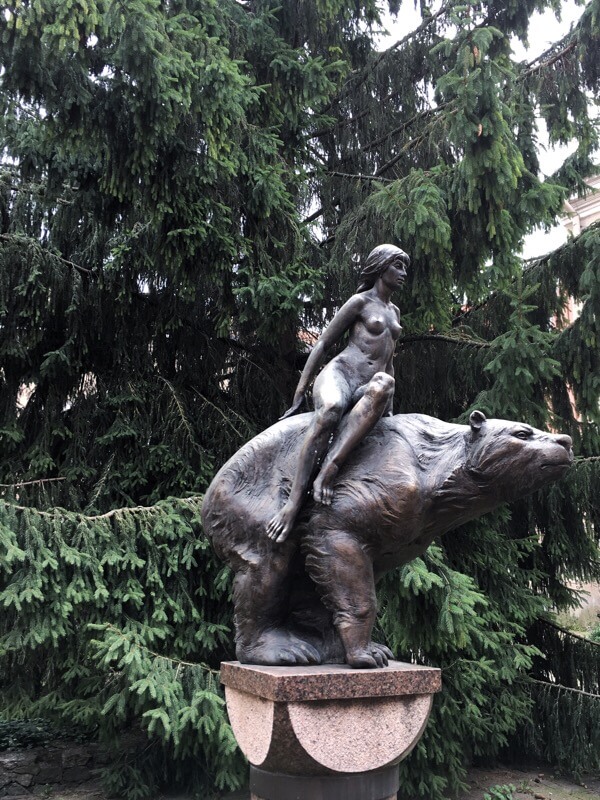
When Lithuania was occupied by Russia in the late 1700s, it was completely wiped off the map. After a brief independence from Russia from 1918 to 1940, it was again occupied, this time by the Soviet Union, which spread its atheist influence. In fact, the oldest church in Vilnius was converted into a warehouse in which to store vegetables, so it was divided into three floors. Because of the difficulty of reversing this conversion, the church is still not a church today. At one point, it was rented out to a mobile service provider, which is why there are so many antennae on it. The joke is that all those antennae grant you a direct connection to God from this church.
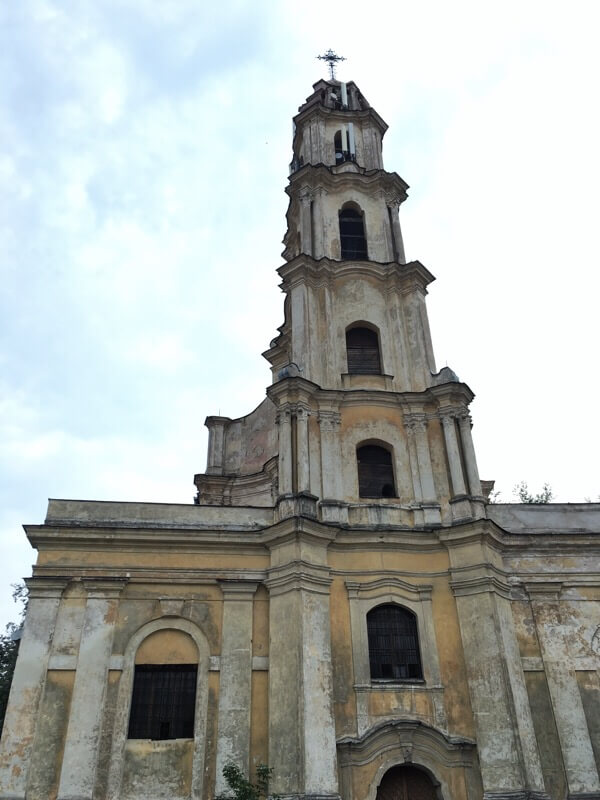
Next, we visited Užupis, a neighborhood of artists who declared themselves an independent republic on April 1, 1997 because they were tired of being neglected by the city government. They used to have an 11-person army, but they later disbanded it to be a peaceful nation and replaced it with a guardian angel.
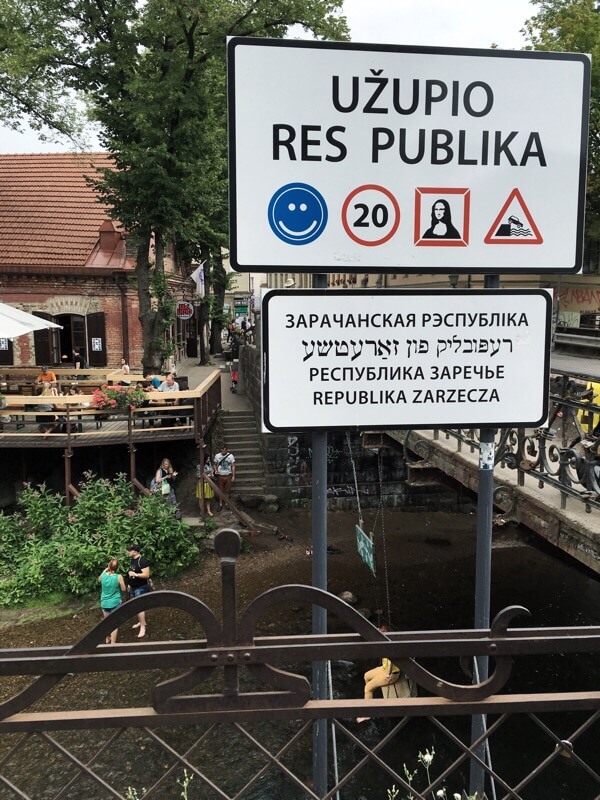
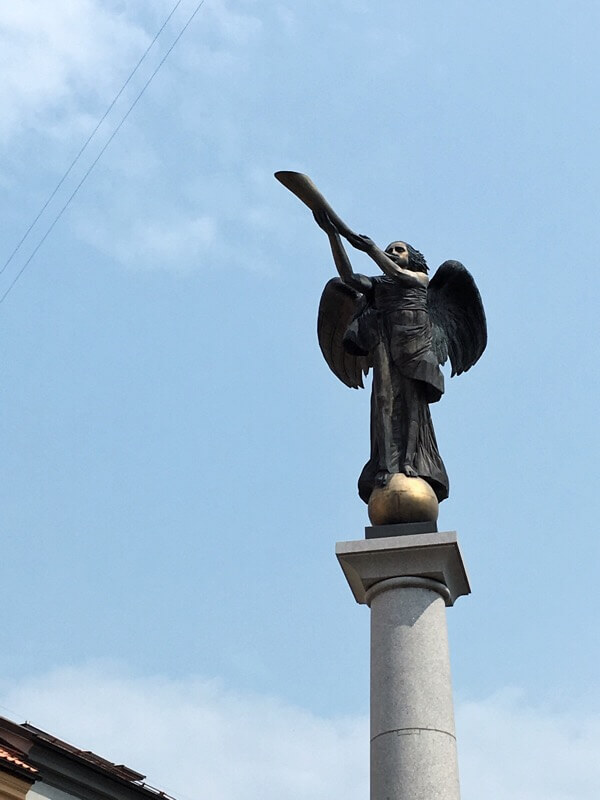
Romas Vilčiauskas, the sculptor of the guardian angel, also created the Užupis Mermaid. She is now also referred to as the Naughty Mermaid because once when the Vilnia River rose too high, she tried to escape. But a resident put on a diving suit and retrieved her.
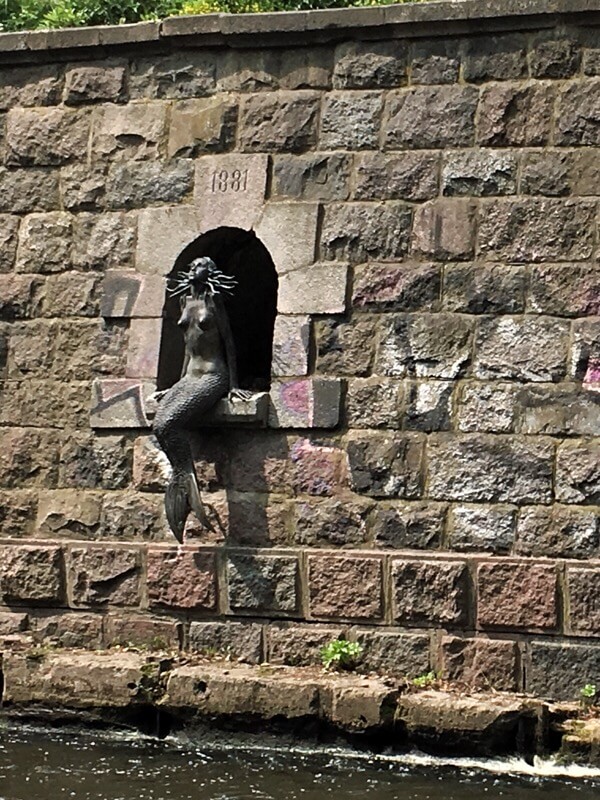
Užupis has its own currency, which you can only use on April 1 and only on beer. It also has its own constitution, and you can find 26 translations of it on Paupio Street, even in Traditional Chinese.
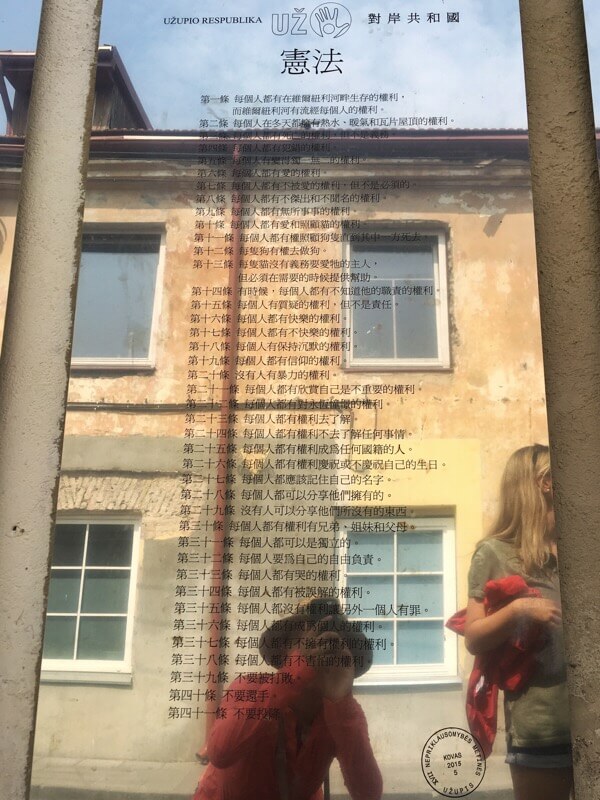
The flag is of an open hand with a hole in the palm to show that this artistic nation does not create art for money as it would just fall through the hand. The flag you see next to the Užupis hand is that of Christiania, Copenhagen, with which Užupis is a sister city.
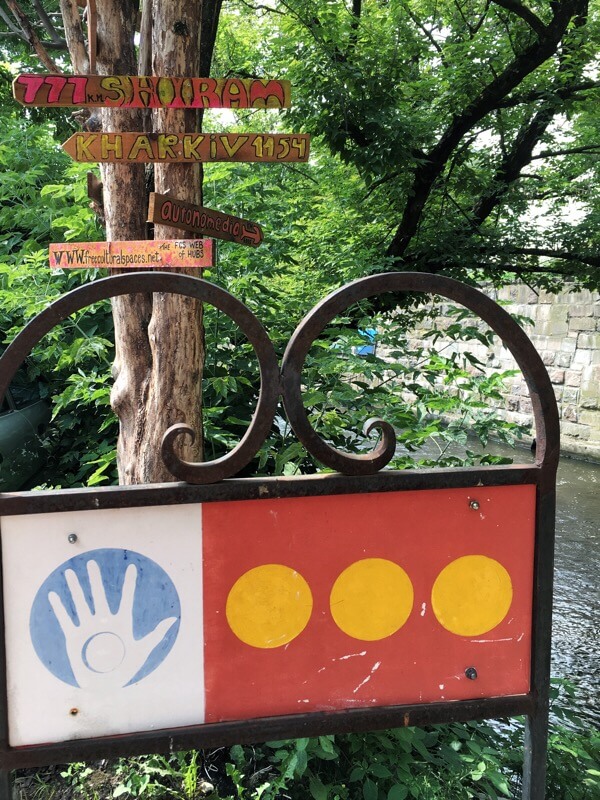
Of its 7,000 residents, 1,000 are artists, so you can see lots of outdoor art.
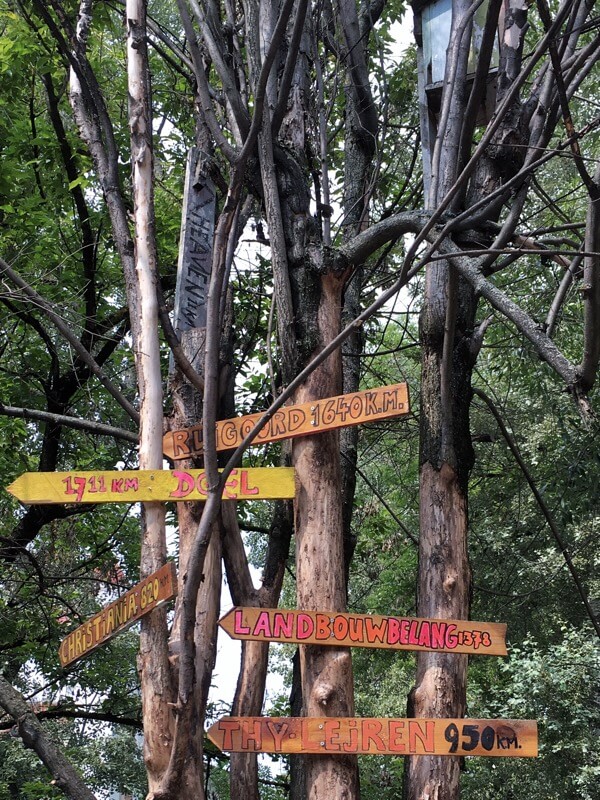
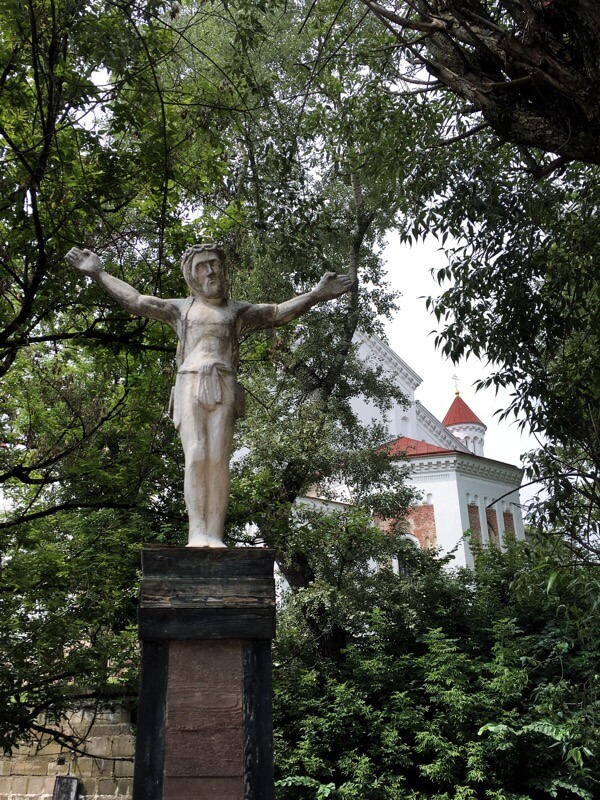

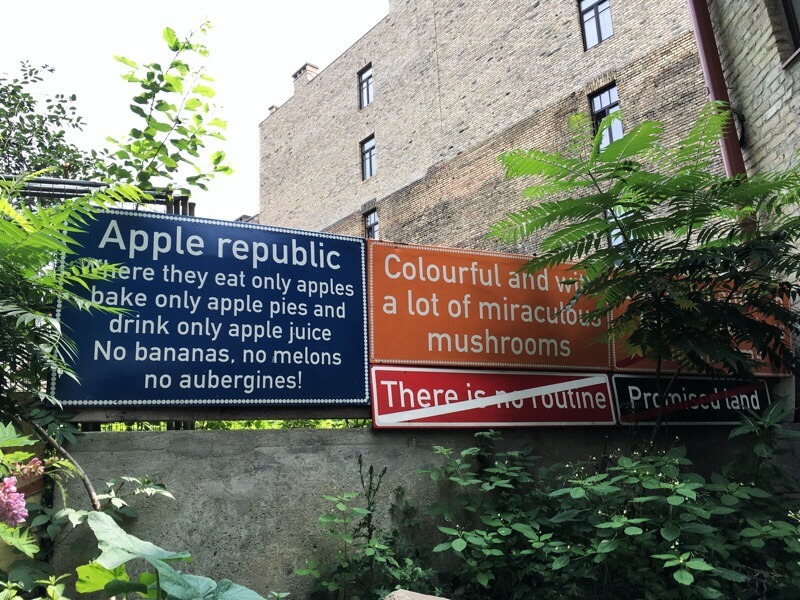
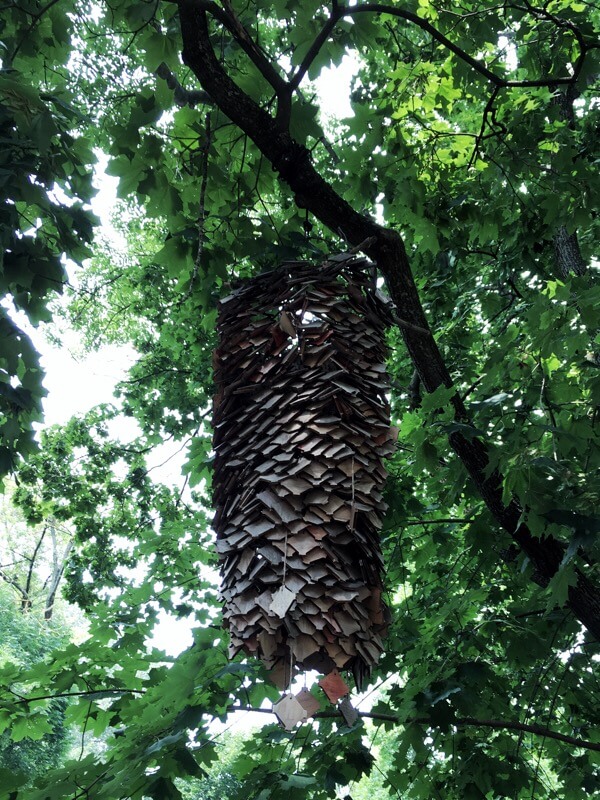
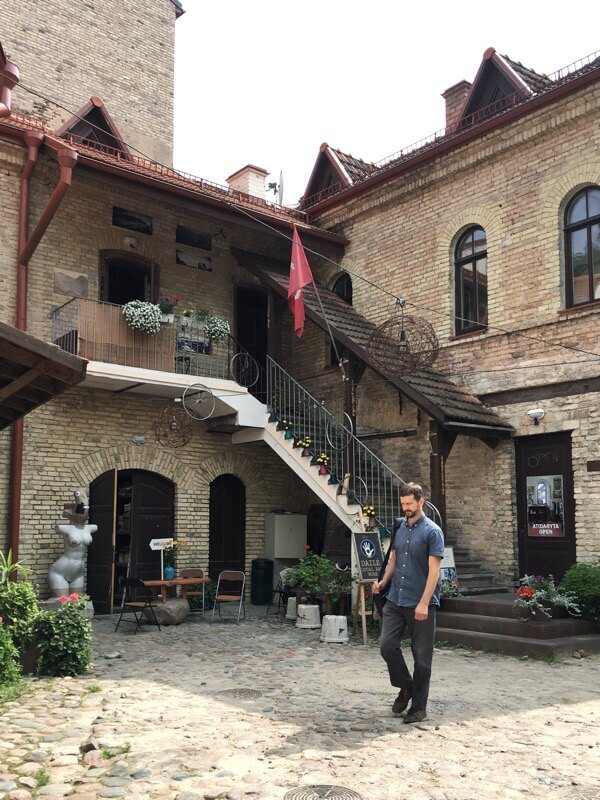
After leaving Užupis, we visited St. Anne’s Church, which is extremely popular for weddings. It’s famous because people say that when Napolean marched through Vilnius on his way to Moscow, he liked the church so much that he wanted to take it back with him to France. (Historians deny this legend since Napolean didn’t like churches.) But Lithuanians like to perpetuate this story anyway.
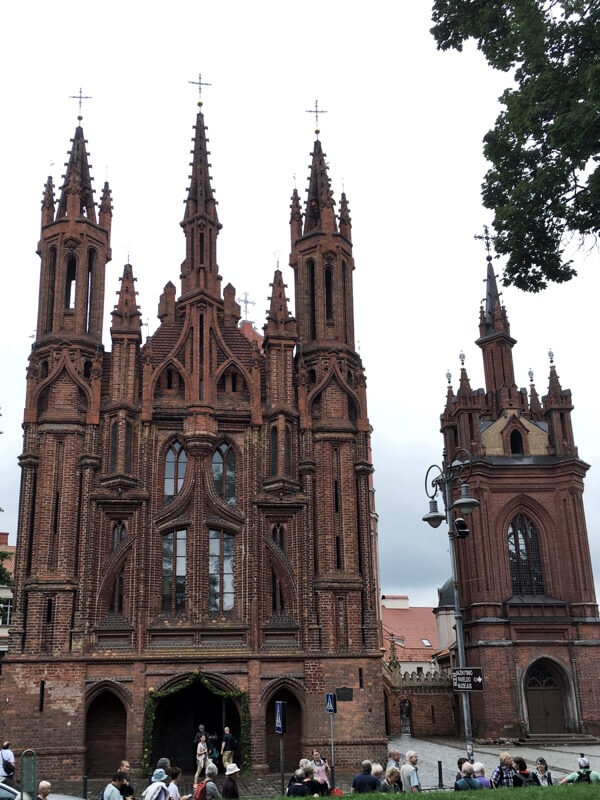
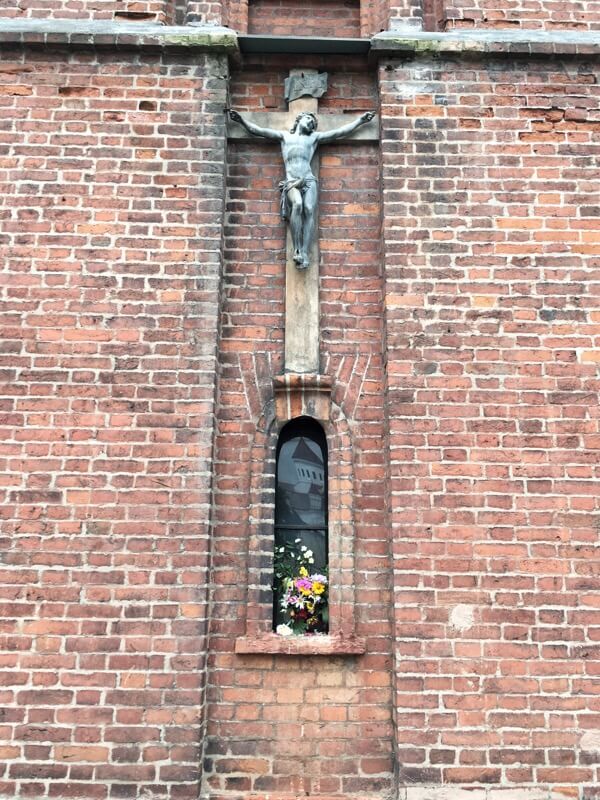
Literatų Street was also a fun place where you could probably spend some time. Many tributes to Lithuanian authors are on display, as well as some to authors from other parts of the world who have some tie to Lithuania, even if it’s just through a character. For instance, Thomas Harris, the creator of Hannibal Lecter, is honored here because his famous character is Lithuanian.
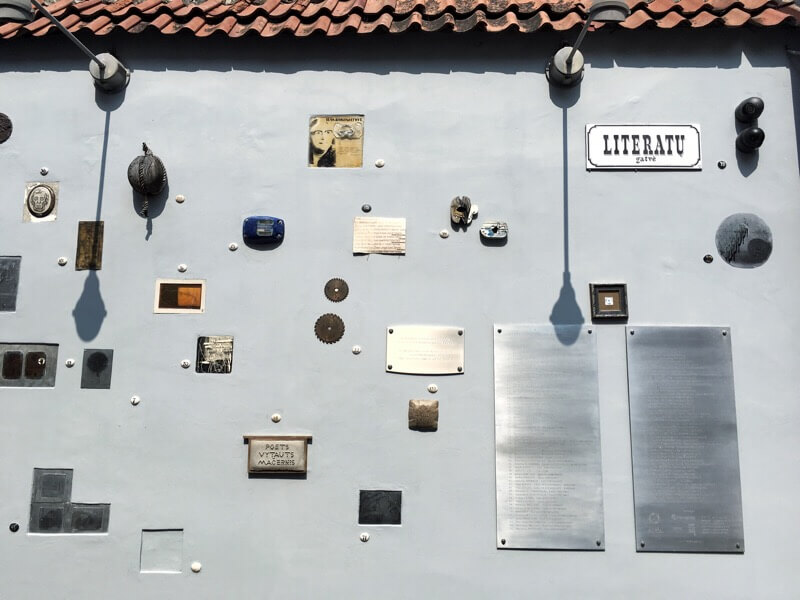
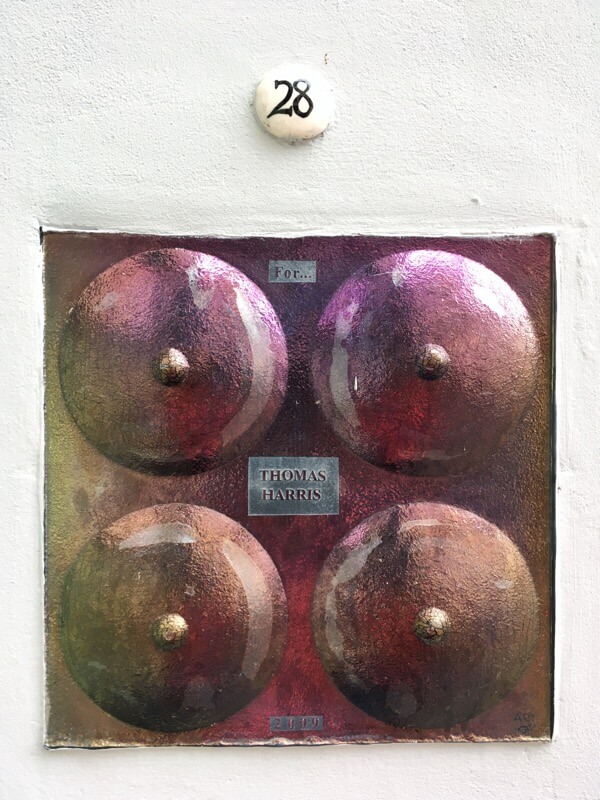
We finished the tour in Cathedral Square, where the Singing Revolution started in Vilnius on the special tile called the Miracle Tile, and Lithuanians say if you stand on it and spin around five times, your wish will come true.
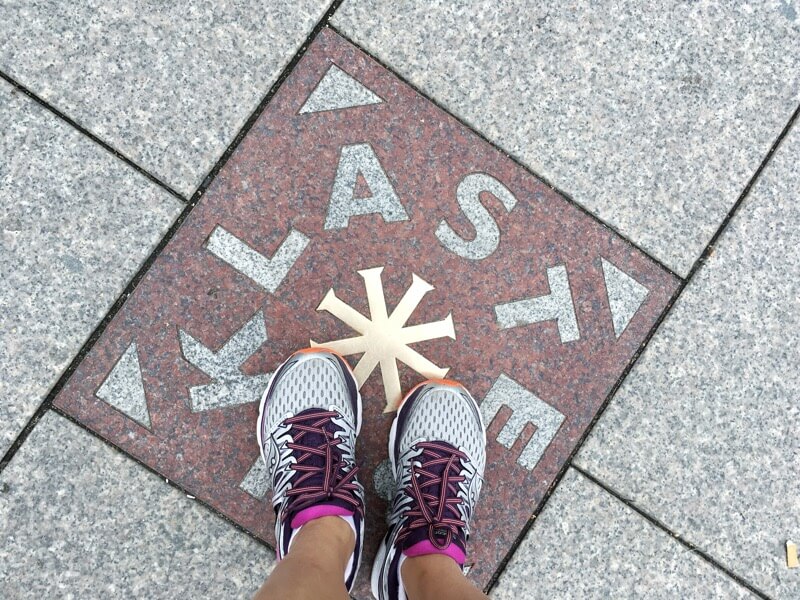
Martina invited anyone interested to continue hanging out at a local pub. You can read more about it in my Vilnius, day 1 post.